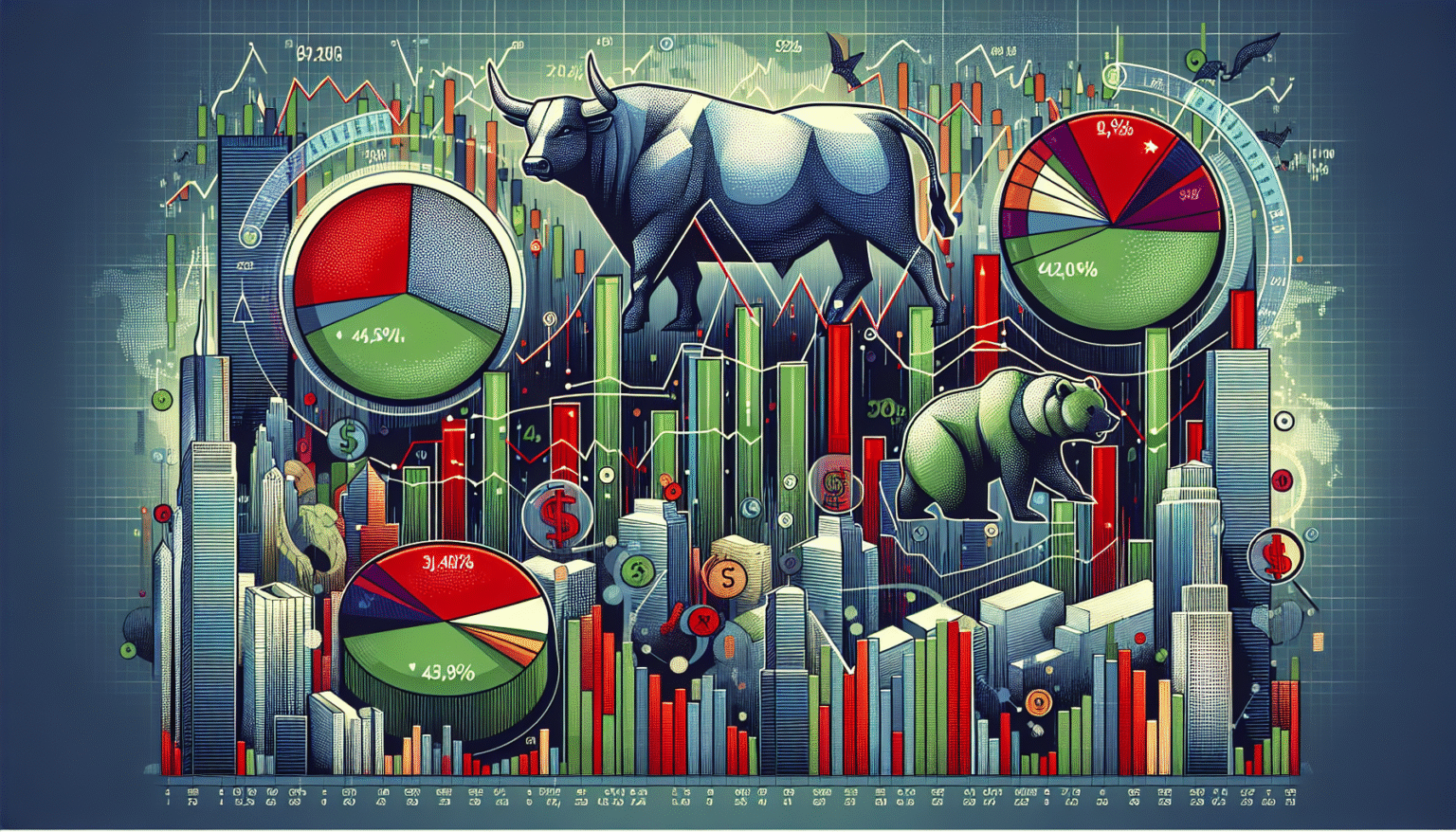Understanding US Stock Market Trends: A Comprehensive Analysis
The US stock market serves as a reflection of the economic landscape, influenced by a myriad of factors that marketers and investors must decode. This article delves deep into the fundamentals of stock market trends, providing insights into key concepts, driving forces, and analytical tools that shape the investment landscape.
1. Defining Stock Market Trends
A stock market trend refers to the general direction in which stock prices move over time. Trends can be oriented upward, downward, or sideways. Understanding these trends is crucial for investors aiming to make informed decisions.
1.1 Types of Trends
-
Bull Market: Characterized by rising prices, a bull market often instills investor confidence, prompting increased buying activity. Historically, bull markets occur when the economy is strong, guided by high consumer confidence and production levels.
-
Bear Market: In contrast, a bear market signifies falling stock prices, typically associated with economic downturns, reduced investor confidence, and decreased consumer spending. Identifying these trends helps investors manage risks effectively.
-
Sideways Market: Stocks move within a relatively stable range, displaying no clear upward or downward trend. This phase often indicates indecision among investors, with prices fluctuating due to market uncertainties.
2. Key Drivers Behind Market Trends
Understanding the underlying forces that drive market trends is essential for investors:
2.1 Economic Indicators
Economic indicators such as Gross Domestic Product (GDP), unemployment rates, and consumer price index (CPI) play a pivotal role in shaping stock market trends. Positive economic indicators typically lead to a bullish market, while negative indicators signal potential downturns.
2.2 Interest Rates
Interest rates directly impact borrowing costs and consumer spending. When central banks, like the Federal Reserve, lower interest rates, borrowing becomes cheaper, fostering economic growth and typically stimulating stock market performance. Conversely, increasing rates often lead to decreased spending, mitigating stock prices.
2.3 Corporate Earnings
Earnings reports are among the most significant market-moving indicators. Strong earnings results can bolster stock prices as investors anticipate continued profitability. Conversely, disappointing earnings can lead to sharp declines, signaling a trend reversal.
2.4 Market Sentiment
Investor sentiment plays a crucial role in trend formation. This psychological aspect can be quantified using metrics like the Fear & Greed Index. Bullish sentiment often fosters upward trends, while bearish sentiment can trigger downward trends.
3. Analyzing Stock Market Trends
Investors employ various analytical methods to understand and predict stock market behavior:
3.1 Technical Analysis
Technical analysis involves examining historical price movements and trading volumes to identify patterns that may suggest future market behavior. Charting tools, trend lines, and moving averages are commonly used to visualize trends and develop trading strategies.
-
Candlestick Patterns: Investors often use these patterns to gauge market sentiment. For example, a “hammer” candlestick may indicate a potential reversal from a downward trend to an upward trend.
-
Moving Averages: Simple Moving Averages (SMA) and Exponential Moving Averages (EMA) are popular tools that smooth out price fluctuations and help identify trends. A crossover of short-term and long-term averages can signal a possible trend reversal.
3.2 Fundamental Analysis
This methodology emphasizes evaluating a company’s intrinsic value based on financial statements, economic conditions, and industry trends. By assessing factors such as price-to-earnings ratios and dividend yield, investors can gauge whether a stock is undervalued or overvalued.
4. Market Cycles
Stock markets experience cyclical patterns, often categorized into four phases:
-
Accumulation Phase: Characterized by stable prices, this phase occurs after a bear market when savvy investors begin to purchase stocks at relatively low prices.
-
Public Participation Phase: Following accumulation, public awareness rises, leading to increased buying. This phase often marks the beginning of a bull market.
-
Distribution Phase: As prices peak, early investors may begin to sell off their shares to capitalize on gains, leading to fluctuations as more investors join the market.
-
Panic Phase: Market sentiment shifts to fear, causing rapid declines in stock prices, often leading back to bear markets.
5. The Role of External Factors
Several external factors influence stock market trends:
5.1 Geopolitical Events
Political events, such as elections, trade wars, or economic sanctions, can have a profound impact. For instance, uncertainty surrounding an election may lead to volatility in stock prices, as investors anticipate changes in policies.
5.2 Technological Advancements
Innovation often drives market trends, particularly in sectors such as technology. Breakthroughs in technology can lead to significant stock surges, exemplifying how external factors contribute to market behavior.
5.3 Global Economic Conditions
The interconnectedness of the global economy means international events can also affect US stock markets. Economic slowdowns or growth in major economies like China or the EU can influence stock market trends in the United States.
6. Investor Strategies to Navigate Trends
Investors utilize various strategies to capitalize on stock market trends:
6.1 Trend Following Strategy
This strategy involves buying securities in an upward trend and selling short in a downward trend. Trend followers rely heavily on technical indicators and often employ stop-loss orders to manage risk.
6.2 Contrarian Investing
Contrarian investors look to capitalize on trends by betting against the prevailing market sentiment. This approach often requires patience, as it may take time for market valuations to realign with intrinsic value.
6.3 Diversification
Diversification mitigates risk by spreading investments across various asset classes, sectors, and geographies. This strategy allows investors to weather downturns while still participating in potential upswings.
7. Psychological Aspects Influencing Market Trends
Market psychology significantly impacts investment decisions. Cognitive biases, such as herding behavior, can lead to emotional decision-making that drives trends. Understanding these psychological aspects can provide investors with an edge in predicting market movements.
This exploration of the US stock market trends highlights the complexities and nuances that characterize market behavior. Understanding these fundamental principles and employing effective strategies can empower investors to make informed decisions in navigating the ever-evolving landscape of stock trading.






